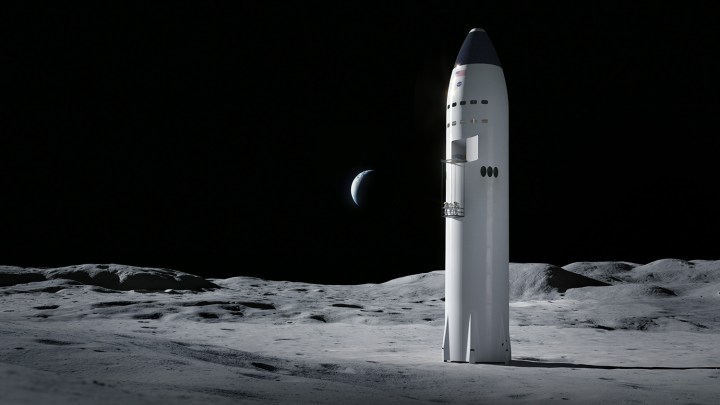
NASA has inked a deal with SpaceX for a second mission to put astronauts on the lunar surface before the end of this decade.
The space agency last year selected SpaceX for the first crewed lunar landing in 50 years using a modified version of its in-development Starship spacecraft. That mission could occur as early as 2025, with the second landing in 2027.
NASA and SpaceX’s crewed missions currently involve sending astronauts to the International Space Station (ISS) about 250 miles above Earth, but the maiden launch of NASA’s mighty SLS rocket on Thursday as part of the Artemis space exploration program means the moon is about to take center stage when it comes to human voyages to space.
The moon-bound Artemis I mission that launched from the Kennedy Space Center this week is uncrewed, but the trip is testing the technologies of a spaceflight system that will send astronauts on a flyby of the lunar surface in 2024 as part of the Artemis II mission.
Following that, Artemis III will put two astronauts on the moon using SpaceX’s spacecraft in 2025, and this week NASA announced it will use the company’s spacecraft for a second landing two years later as part of Artemis IV.
However, SpaceX is still yet to fully test the Starship spacecraft, which would fly into orbit aboard SpaceX’s Super Heavy rocket. The first orbital test flight of the new spaceflight system has faced multiple delays but could take place before the end of this year.
Looking further ahead, NASA is planning to build the Lunar Gateway space station that will stay in orbit around the moon and act as a base for astronauts to live and work on long-term missions, similar to how they do now on the ISS. The space agency also wants to build a permanent base on the lunar surface for long-term crewed stays. From the base, astronauts will venture into previously unexplored parts of the moon to locate resources such as water ice that could be purified as drinking water, converted into breathable oxygen, or even used as fuel for powering the first crewed missions to Mars.
“Returning astronauts to the moon to learn, live, and work is a bold endeavor,” NASA boss Bill Nelson said in response to Wednesday’s announcement. “With multiple planned landers, from SpaceX and future partners, NASA will be better positioned to accomplish the missions of tomorrow: conducting more science on the surface of the moon than ever before and preparing for crewed missions to Mars.”


